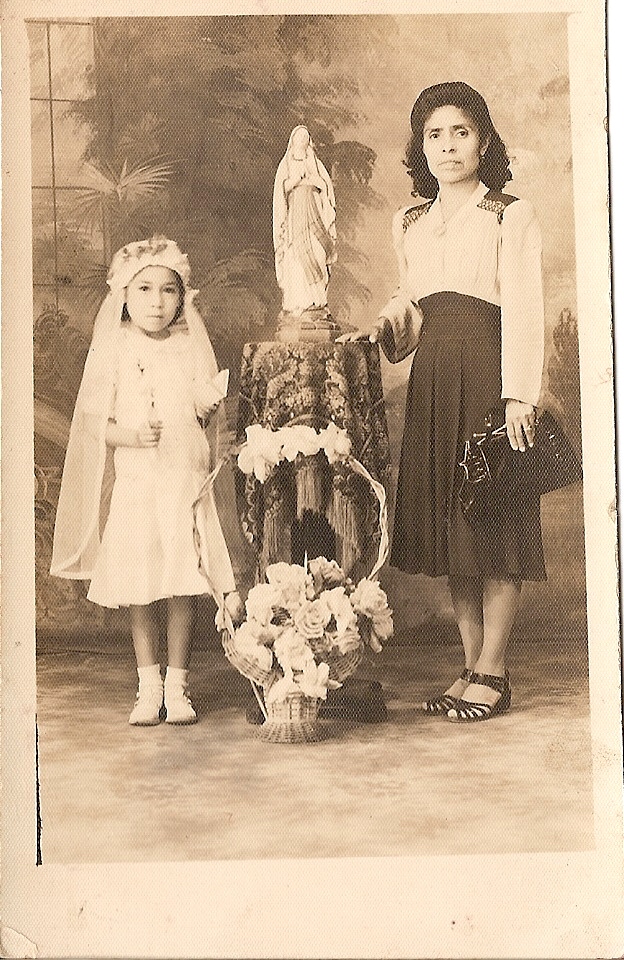TRANSCRIPTION
Where was your birth place?
It was in a house. It was in a poor neighborhood. It was a house that only had two rooms; a bathroom and a kitchen. It was for rent, i think. I was the first child and my mother had a mid-wife. She said that I was born seven months. I was so tiny that I fit in a shoe box. I think I weighed about five pounds and in that time there was no money to take me to the hospital, but luckily I was born ok.
How long did your mother have a mid-wife?
Well, that mid-wife was around for the birth of my brother Paul, sister Lucy, brother Joe, Sister Cecilia and one of my other baby sister that died. My sister Mary was born in a hospital in Michigan and also my other sister, Rosy, was born in a hospital in Michigan. I also had another baby brother that died in Michigan.
So how many were in the family?
Nine. The first half were born in our very own home and the second half in a hospital.
Where did you all live in San Antonio?
We lived on the westside on the street of Leona and El Paso St.
How was it growing up in the westside?
Well, we lived with my grandmother first. She lived on the corner of Guadalupe St. and San Fernando. We lived down an alley from my graney from my grandmother's house after we moved out. I was five years old when we lived with my grandmother and we lived with her for about a year, down a block from Robert B. Green Hospital and John B. Hood Elementary School, where I attended. It was a peaceful neighborhood. In my days, there wasn't much crime like today. I had a bestfriend that lived in a corner and her name was Katie and we always played hopskotch, jax, jump rope; and i also played with other friends too.
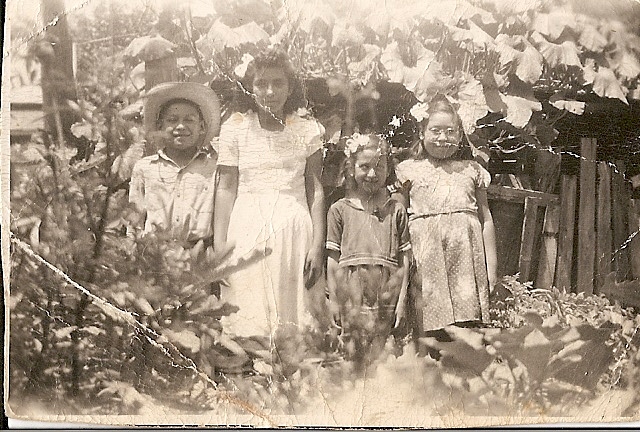
Did you watch TV?
We didn't have a TV. We would go to the neighbor's house to watch TV and she started to charge us 10 cents everytime we went over. She said it was for the electricity bill (laughs).
Did you like going to school?
Oh yes, but when i passed to the 8th grade, I got out. I was going to Lanier High School. Back then it was a middle school and high school together starting from the 7th grade. My mom had two more kids, so I had to help with the washing and the cleaning around the house. We were five in the family and I began to miss too much of school so I got out. One day she told me," You're not going to school tomorrow because you have to wash".
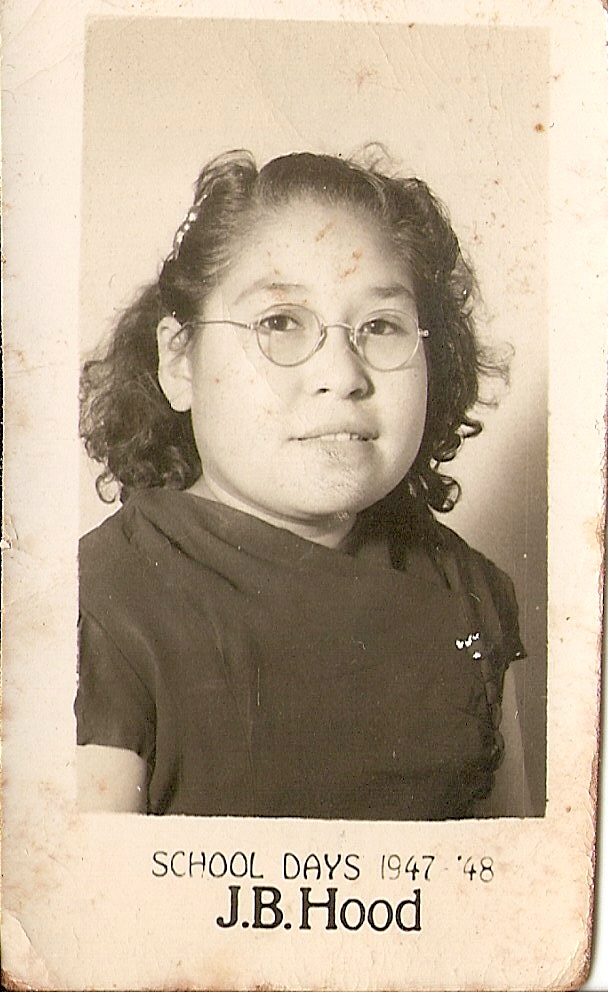
Would your mom let you walk the streets on your own?
Yes. It wasn't too dangerous back then. There was a store next to the hospital, in a corner, and she would send me to go buy whatever she needed, like bread or meat; and at that time we used coupons that allowed us to get only a limit of meat. It was something like food stamps because my dad didn't make a lot of money. The coupons were used on meat, sugar, coffee, bread, but not on fruits or vegetables. My mother would make tortillas at home to save money. We would buy bread that costs 10 cents, but sometimes we didn't have enough for it. We would only buy the necessary things. We only ate meat once a week, but most of the time it was chicken. My mother would make caldo de pollo or mole every Sunday.
What family traditions did you all have?
We would always go to my grandmother's house on Sundays. We would always walk to her house because we didn't have a car. I would go to church on Sundays with my grandmother. We would go every morning and night.
What church did you go to?
El Corazon De Maria or The Sacred Heart in English. It was about three blocks from my grandmother's house. We would walk to church. Back then, there wasn't express ways or other traffic so a lot of people walked a lot. We would rarely take the bus.
What was downtown like?
Downtown wasn't that big as it is now. It was just Commerce St. and Houston St. and that's all. I didn't go anywhere else because I would get lost. We would always go to the stores Wood Worth and Crest. They were like today's dollar stores; but I wouldn't go alone. My mother or aunt would take me. My mother would always take us to downtown to spend time at the carnival or festivals like Fiesta. We would always visit the Mylum Park that's in front of the Santa Rosa Hospital.
What was Fiesta like?
It would start on Houston St. and then went on to Commerce to the Alamo. It didn't last too long as it does now. It lasted for maybe an hour. The carnival would be on Dolorosa St. It would get too full that we couldn't walk through. The parade was more about the local schools in San Antonio and other counties around, but now it has gotten too big that people outside Texas come to participate in the parade. Now you see more girls that are almost naked. Its not very pleasing. I remember that in the year '79, there was a shooting during the parade,a Fiesta Sniper
What happened that day?
There was a man hiding in a trailor and he started shooting all the people. The trailor was parked by the Pig Stand where the parade began. Luckily, we were sitting by Commerce street away from the shooting. We were wondering why the parade was taking long. All of a sudden, we saw the police driving their motorcycles announcing that the parade was being canceled because of the shooting. That was the last time I went to the parade with my family. It was scary. Now i just watch them on TV.
What was your first job?
I started at the Gunter Hotel when I was only 16, but the lady that got me in told me to say that I was 18 because I wasn't old enough, but I was tall enough. I cleaned rooms. I would clean the beds, the bathrooms, and vacuum.
How long did you last as a maid?
I didn't last because I didn't like it. Then I went to work at Judson Factory. I helped with the chocolates where I put the cherries in a pan, in a white thing, and it would run through a chocolate fountain. After the cherries would be covered in chocolate on the other side, the other ladies would get them and put them in a container. I lasted there for about four months.
So when you got paid, would you give it all to your parents?
No, they let me keep some of it. I would cash my checks in a corner store, but I wouldn't get paid not even a lot. I would make like 50 dollars a week.
What would you do for entertainment?
On Saturdays or Fridays nights, we would go to the outdoor theatre nearby where we lived. It was called Foleys Outdoor Theatre. But it wasn't with cars. It just had seats outside. I would take my brothers and sisters. It was located on Pecos St.
How much did it cost to go in?
They charged 25 cents and the popcorn was only 5 cents! We also went to a place that was called Wesleys, where they had little festivals. They had music and dances with charros, and arts and crafts for the children. It was only in the summers. They also had a clinic there.
Where was this at?
It was on the street of Leona and Colima. It was the 'Wesley House'. They also had activities for the moms. They would show them how to cook and raise a family. My mother would go sometimes. She would always send us every summer on the weekends.
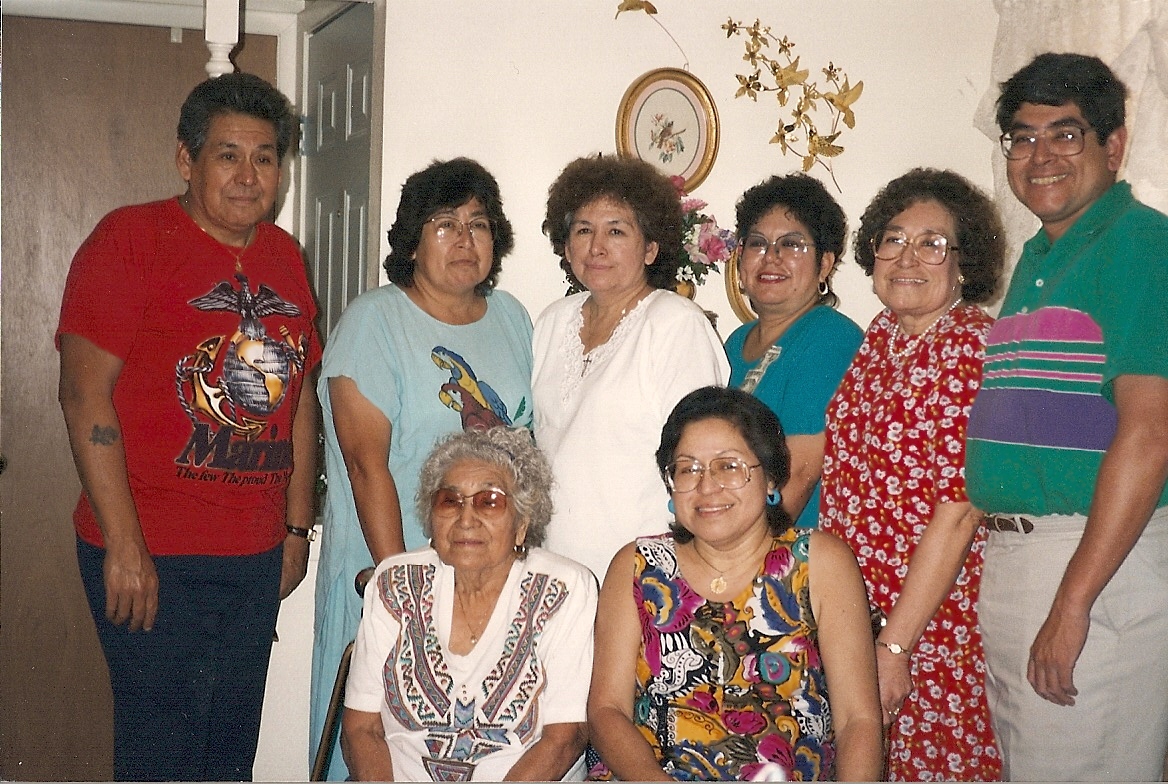
How old were you when you met your husband?
I was 19. I met Rafael at my job at the Tenning Company. I would prepare the leather for shoes. I would paint them white and hang them so they can be ready to be turned into moccasins. When I started there, it was like in June or July and I lasted until October and we got married in November.
How was the marriage life?
He had already two sons from his previous marriage, Rogelio (5) and Jr. (6). I would just stay at house cook and clean. Our first daughter, Annie, was born in '58.
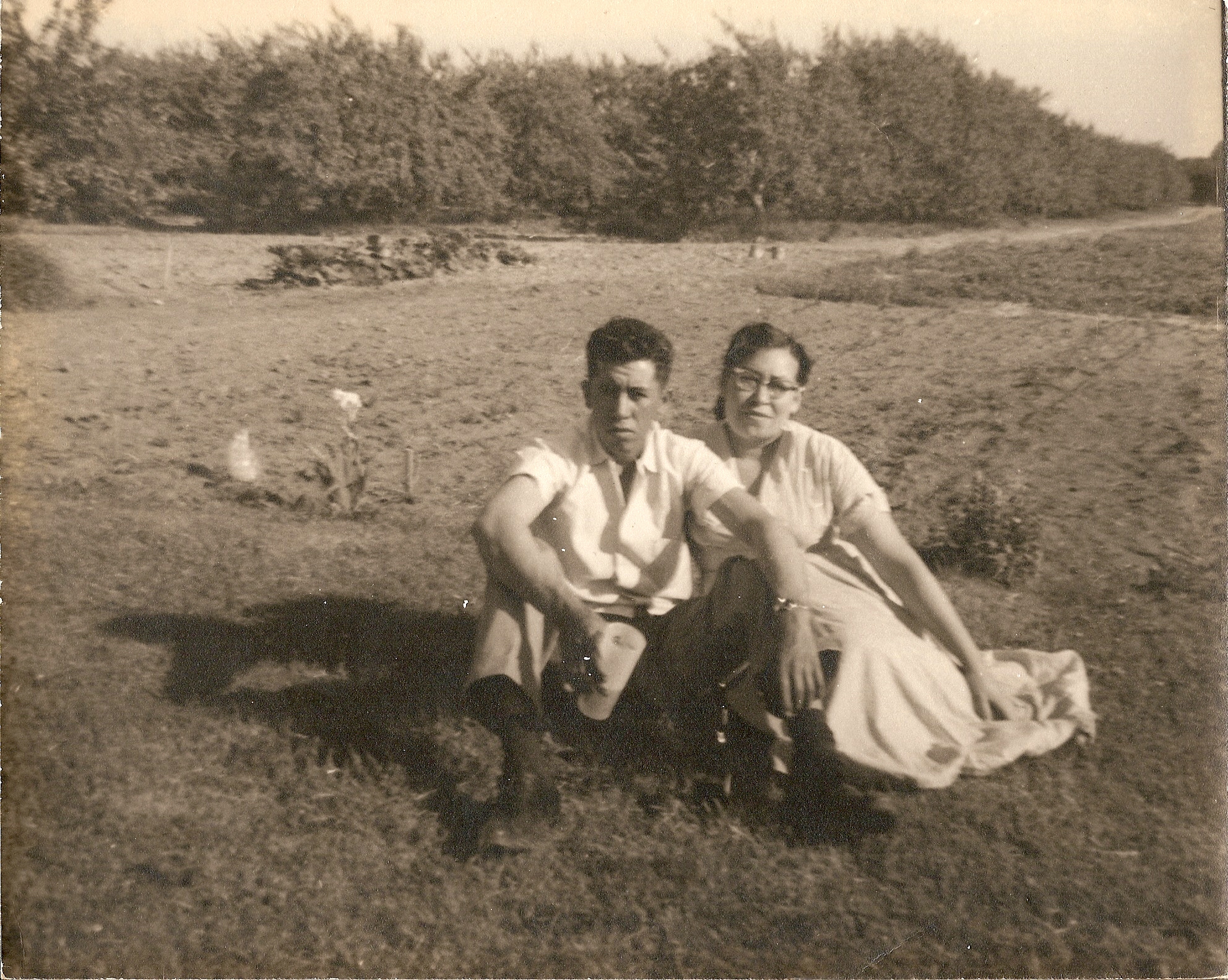
What would you all do as a family?
He would take us to the river medina and go fishing. We liked to go to the parks. One time he took us to the carnival, but he didn't like it. He wasn't used to the crowds, but I liked it because I went a lot when I was small. After two years of being married, in '58, we moved to Nebraska to work as migrant workers. I don't remember the town we stayed in. We were there April and May and then we moved to Michigan in June. It was a small town called Ludington. There, we picked cherries, strawberries, apples, pears, and peaches. We did it for about a year. Then, we had our second daughter, Esther in '59 then Estella in '60. After Estella was born, we moved back to San Antonio and stayed lived here ever since.
How much did San Antonio change?
Well back then there were no express ways, just highway 35. There were a lot of small streets and roads. The south side, where I live now, was nothing but land. I lived in downtown all my life and we wouldn't travel that far. San Antonio used to be a small city, but now it has grown too fast. Now we hear too much violence.
Is there anything else you would like to add to this interview?
(laughs) Oh yes. Just about my daughter Annie. When she was 9 years old, I remember we went to the Fiesta parade and we lost her! While we were buying snow cones, she wandered off to watch the parade. We went crazy looking for her! My husband and I were terrified! My brother was trying to calm us down and helped us look for her. He suggested that we go to the cops and report her missing; and when my husband saw a pair of officers standing outside, he walked towards them and standing in the middle was Annie crying (laughs). We were so glad to have found her.
